In: American Art

Richard Misrach | The Desert Cantos series | 1979 – Present
April 22, 2024Richard Misrach | The Desert Cantos series | 1979 – Present
You look at landscape, but it’s not really landscape, it’s a symbol for our country, it’s a metaphor for our country.
(Richard Misrach speaking about The Desert Cantos)
If you’ve read my past writing, you won’t be surprised to know that I am a fan of the horror genre, both in terms of books and films. This is an underrated and often unfairly dismissed genre : not all horror is equal, of course, but that can be applied to any genre.
In Clive Barker’s film Lord of Illusions (based upon one of his short stories in the Books of Blood series), the opening sequence of the film has often been one of my favourite scenes in the occult horror tableaux. A cult with a charismatic leader who displays abilities that can only be magic is speaking to an entranced group of followers : their ‘headquarters’ is a long abandoned hotel in the California desert, overgrown and run down, a lone fragment shored against the ruins of a dream of prosperity now left unwanted and desolate, blanched and burned by the unflinching sun and sand. The establishing shots as we approach the derelict buildings are entrancing in their ruination, and the state of the cult members mirrors this sense of discarded abandonment….
If that seems somewhat ‘lowbrow’ then let us consider Cal Flynn’s book Isles of Abandoment | Life in the Post-Human Landscape and her chapter that is titled The Deluge and the Desert : Salton Sea, California, United States. This is a fine fit as many of Misrach’s images are of the fetid abomination known as the Salton Sea in Southern California.
It is a poison lake whispering sweet nothings. It promises cool succour, quenched thirst. Despite what I know of this shimmering mirage – despite the stink and the rot and the waste that surrounds it, despite the staring eyes of the dead and desiccating fish that litter its shrinking shores, despite the absence of vegetation – I can’t help but quicken my pace. I stumble through sucking mud towards this false vision, on and on until the muck is over my feet, and up to my ankles, and I am shin-deep in a warm broth that, when stirred, releases a draught so stagnant I can taste it.
Richard Misrach began this series in 1979 – nearly half a century ago – and “this ongoing project explores the southwest American desert landscape, and the impact of our human presence.” In that light, considering Misrach’s intent with this work, these images are not so much passive landscapes as active ones : these are scenes of the results of human action and remind me of my time on the Canadian Prairies and the plethora of abandoned oil wells, or the legacy of Uranium City in Saskatchewan, that speak to an attitude towards the environment that is not just an indicator of the Sixth Extinction but our unwillingness to consider the planet as something other than to be exploited and left when no longer of ‘use’, framed within a capitalist regime. As I’m engaged in my usual tangential style of criticism, I must also cite Richard Rodriguez’ essay The God of the Desert where he offers an aside that the three Abrahamic religions – being birthed in the desert – have an adversarial relationship to nature, instead of a more fostering, co dependent one….
Let us return to Clive Barker – specifically his book The Damnation Game (and considering some of the things I’ve mentioned already, citations about horror and hell may seem less forced, now. Ponder that ‘hell’ is a place we make, not a ‘place’ we ‘find’…which is perhaps what Misrach is documenting with these images) :
In a wasteland a few hundred yards from a highway overpass it finds a new incarnation: shabby, degenerate, forsaken. But here, where fumes thicken the atmosphere, minor terrors take on a new brutality.
It had once been an impressive building, and could have been again if its owners had been willing to invest in it. But the task of rebuilding and refurbishing such a large and old-fashioned hotel was probably financially unsound. Sometime in its past a fire had raged through the place, gutting the first, second and third floors before being extinguished. The fourth floor, and those above, were smoke-spoiled, leaving only the vaguest signs of the hotel’s former glamour intact.
From The International Center of Photography :
Richard Misrach was born in Los Angeles in 1949 and received a BA in psychology from the University of California, Berkeley. He helped popularize large format color photography in the 1970s and 80s and is best known for Desert Cantos, his ongoing study of the American desert and man’s relation to it. The project presents a variety of images, from traditional landscapes to the space shuttle landing, which Misrach considers a singular work, with each canto acting as the equivalent of a (book) chapter heading. Misrach also works in a social documentary style, which can be seen in his Louisiana photographs of Cancer Alley, the corridor between Baton Rouge and New Orleans, and the aftermath of Hurricane Katrina. In addition, he also has taken pictures of the desert sky; the Golden Gate Bridge; the beaches, water, and jungles of Hawaii; Stonehenge; and the Pyramids.
Misrach’s photographs can be found in the collections of the Metropolitan Museum of Art; the Museum of Modern Art; the National Gallery of Art in Washington, DC; and the Whitney Museum of American Art, among others.
More about Richard Misrach’s photographs and aesthetic (both the Desert Cantos series and other works) can be enjoyed here and here.
~ Bart Gazzola
Read More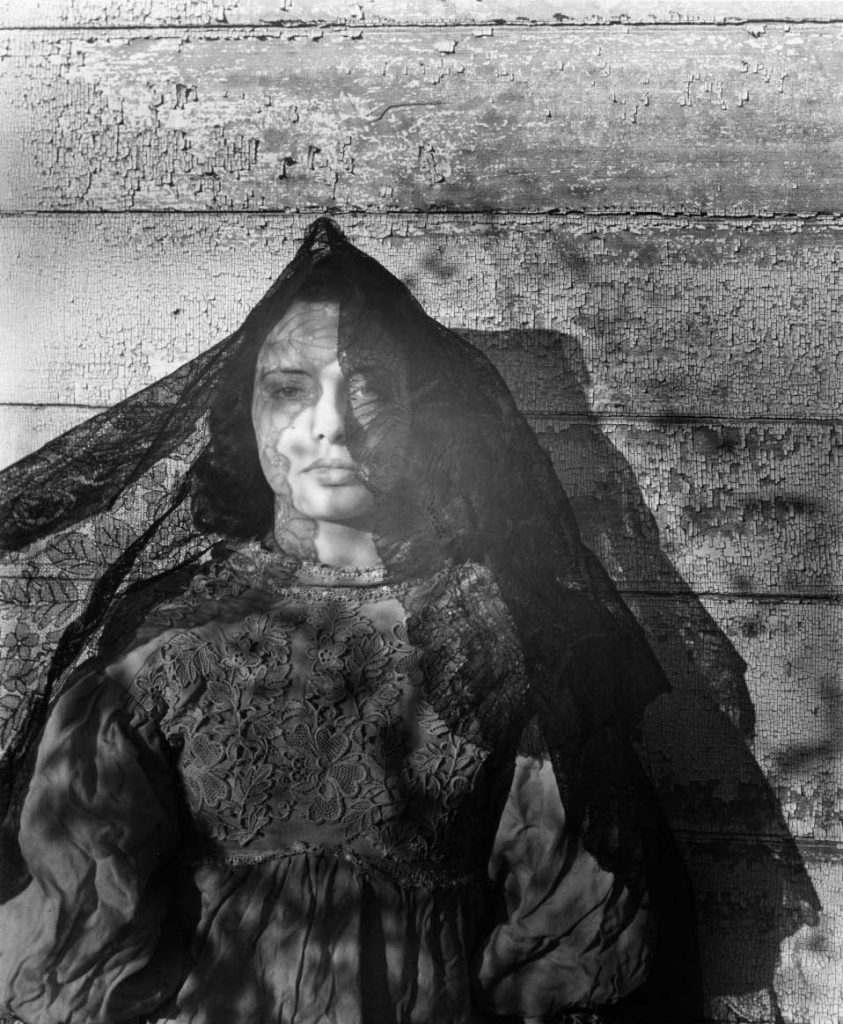
Clarence John Laughlin | Southern Gothic
March 12, 2024Clarence John Laughlin (1905 – 1985) | Southern Gothic
Laughlin was a New Orleans photographer : he’s best known for his black and white, sometimes uncanny and disquieting images of the Southern United States. Considering the ethereal and dream like quality of many of his scenes, he’s sometimes spoken of as the father of American Surrealism. In considering his photographs, the ‘original’ definition of Surrealism from André Breton was to “resolve the previously contradictory conditions of dream and reality into an absolute reality, a super-reality.” Less pretentiously (Frida Kahlo did refer to Breton as being among the ‘art bitches’ of Paris, whom she disdained, ahem), in the work of Laughlin, one can see that he was attempting to both re interpret and define his own memories and experiences of a site, while also employing the place and people within it, that is rife with contested narratives.
I tried to create a mythology from our contemporary world. This mythology — instead of having gods and goddesses — has the personifications of our fears and frustrations, our desires and dilemmas.
(Clarence John Laughlin)
For those unfamiliar : ‘Southern Gothic is an artistic subgenre…heavily influenced by Gothic elements and the American South. Common themes of Southern Gothic include storytelling of deeply flawed, disturbing, or eccentric characters who may be involved in hoodoo [or the large sphere of the occult], decayed or derelict settings, grotesque situations, and other sinister events relating to or stemming from poverty, alienation, crime, or violence.’ (from here)
As darkness set in, the mist drifted off the deep acreage of sugarcane that flattened back to the surrounding slough and mire. Blooming loblolly bushes, palmettos, and thick fields sprouting a type of flower he’d never seen before filled the evening air with an assertive but sweet fragrance.
The Nail family lived in an antediluvian mansion that had been built long before the separation of states. He saw where it had been rebuilt after Civil War strife and he could feel the dense and bloody history in the depths of the house. He glanced up at a row of large windows on the second floor and saw six lovely pale women staring down at him.
————————
A tremendously wide stairway opened to a landing where colonnades rose on either side abutting the ceiling. He could see the six sisters huddled together at the banister curving down from the second floor, all of them watching him, their hair sprawled over the railing. He waved, but only one of them responded, lifting her hand and daintily flexing her fingers.
(Tom Piccirilli, Emerald Hell)
The book I quote above takes place primarily in Louisiana – where the artist who’s the focus of this essay was born, and a place, whether in terms of New Orleans (his birthplace) or the greater Southern Reach (a term I borrow from another author), that defined his aesthetic. In that book, there are many dark characters that are pervasive within Southern Gothic horror that’s a wide genre, one which I’ve been quite interested in of late. The aforementioned Nail family’s daughters suffer under a ‘curse’ where they cannot speak, and seem to move about the massive manse like apparitions, veiled and almost insubstantial, like a breeze accentuated by their long dresses and hair (like so many lamenting female ghosts of the South, and elsewhere).
Another player in Emerald Hell is known only as ‘the walking darkness’ or ‘Brother Jester’ : a former evangelical preacher who, after surviving an attempt made on his life, wanders the highways and byways of the state, leaving human wreckage in his wake. A later day incarnation of Robert Mitchum’s ‘man of god’ in the film Night of the Hunter (1955), perhaps. I am also reminded of some of the desolate – but drenched in histories and stories, almost like a stain on the ground – landscapes from the first season of True Detective, which is another iteration of the essence of the Southern Gothic.
One could imagine Laughlin’s images as characters and tableaux for such a chronicle. In this sense, Laughlin is a storyteller, an historian, just like Michael Lesy, who took us on a Wisconsin Death Trip…
Ghosts exist for a purpose. Unfinished business, delayed revenge, or to carry a message. Sometimes the dead can go to a lot of trouble to bring a desperate warning of some terrible thing that’s coming.
Whatever the reason, don’t blame the messenger for the message.
(Simon R. Green, Voices from Beyond)
I attempt, through much of my work, to animate all things—even so-called ‘inanimate’ objects–with the spirit of man….the creative photographer sets free the human contents of objects; and imparts humanity to the inhuman world around him.
(Clarence John Laughlin)
Born in Lake Charles, Louisiana, Laughlin had a difficult childhood, and this – in tandem with his ‘southern heritage’ and literary interests – are touchstones for his work. The family moved to New Orleans in 1910 after further economic hardship, with his father working in a factory in the city. A quiet, introverted child, Laughlin had a close relationship with his father whose encouragement – especially in terms of Laughlin’s interest in literature – was important to his development as an artist. His father’s death in 1918 affected him greatly : the dark, funerary, epitaphic nature of much of his work, perhaps, echoes this loss.
Laughlin never completed high school, but was a “highly literate man. His large vocabulary and love of language are evident in the elaborate captions he later wrote to accompany his photographs.
Laughlin discovered photography when he was 25 and taught himself how to use a simple 2½ by 2¼ view camera. He began working as a freelance architectural photographer and was subsequently employed by agencies as varied as Vogue Magazine and the US government. Disliking the constraints of government work, Laughlin eventually left Vogue after a conflict with then-editor Edward Steichen. Thereafter, he worked almost exclusively on personal projects utilizing a wide range of photographic styles and techniques, from simple geometric abstractions of architectural features to elaborately staged allegories utilizing models, costumes, and props.” (from here)
From the High Museum of Art in Georgia (the accompanying text for a retrospective of Laughlin’s work) : “Known primarily for his atmospheric depictions of decaying antebellum architecture that proliferated his hometown of New Orleans, Laughlin approached photography with a romantic, experimental eye that diverged heavily from his peers who championed realism and social documentary.”
More about his work and life can be enjoyed here and here : and perhaps, while perusing these images, consider listening to another Southerner – Johnny Cash – and his song The Wanderer, that also offers (ironically, considering the title) a place to stand, intertwined with histories both personal and more public, when considering the photographs of Clarence John Laughlin.
~ Bart Gazzola
Read More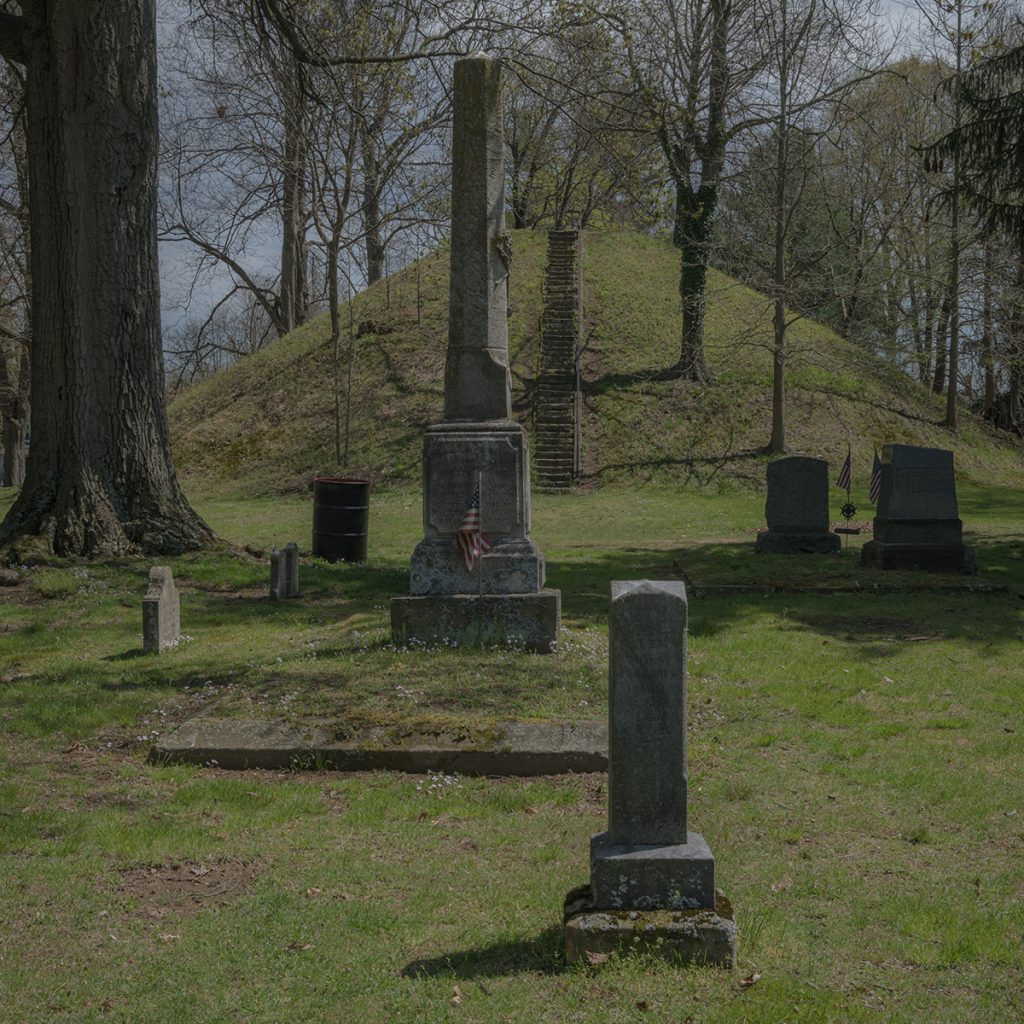
Rich-Joseph Facun | Little Cities | 2022
May 26, 2023Rich-Joseph Facun | Little Cities | 2022
…it takes an ocean of trust in the kingdom of rust…
(Doves)
The Cuyahoga River won’t kill you no more.
They cleaned it up back in ’74.
Well, you might get sick – but welcome to Ohio.
(Luke Doucet)
As I get older, there are some memories that still have an unexpected vivacity : and living again in the city and region where I grew up offers an odd looping of recollection, with elements of nostalgia – and the opposite of that, which might be cynicism or nihilism – informing and deforming my thoughts.
When I first encountered Rich – Joseph Facun’s images – specifically his Little Cities series – I felt transported back to my late teens and early twenties and shuttling back and forth between Windsor / Detroit and St. Catharines, seeing the underbelly of the rust belt wonderland. Specifically taking the train, and thus getting glimpses of smaller urban spaces across Southern Ontario that are often unseen or unconsidered, simply spaces to traverse on the way to somewhere else, not ‘valid’ to be ‘seen’ but as a space to be left behind or to be traversed with your mind – and destination elsewhere.
Facun’s scenes are part of a story that unfolds amidst the post-industrial United States – and these are spaces I’m familiar with from Niagara or the Windsor / Detroit region, that might be a ‘kingdom of rust’ or the ‘rust belt wonderland’ : a detritus of past ‘progress’, leavings of history that we might ignore or not acknowledge but that are literally part of the [memory of] landscape.
In Little Cities Rich-Joseph Facun “guides viewers on a meandering meditation through Southeastern Ohio by depicting the vernacular post-industrial landscape. In their quiet formality, the images call to mind past dreams, present disillusionment, and gently nudge us to look beyond what can be seen on the surface. Through recurring motifs, Facun excavates remaining signs of the Indigenous communities who once called this region home. In mankind’s hubris, we want to believe we shape the land we live on. Facun’s photographs remind us that the landscape contains memory, and it is witness to our misdeeds.” (from here)
Rich-Joseph Facun is a photographer of Indigenous Mexican and Filipino descent. His words : “His work aims to offer an authentic look into endangered, bygone, and fringe cultures—those transitions in time where places fade but people persist.
The exploration of place, community and cultural identity present themselves as a common denominator in both his life and photographic endeavors.
Before finding “home” in the Appalachian Foothills of southeast Ohio, Facun roamed the globe for 15 years working as a photojournalist. During that time he was sent on assignment to over a dozen countries, and for three of those years he was based in the United Arab Emirates.”
More of Facun’s work can be seen here and his IG is here. He has produced a publication for Little Cities, and I encourage you to spend some time with his Black Diamonds and 1804 series. Facun reminds me of Mary Ellen Mark‘s assertion as to how “photography is closest to writing, not painting. It’s closest to writing because you are using this machine to convey an idea. The image shouldn’t need a caption; it should already convey an idea.”
~ Bart Gazzola
Read More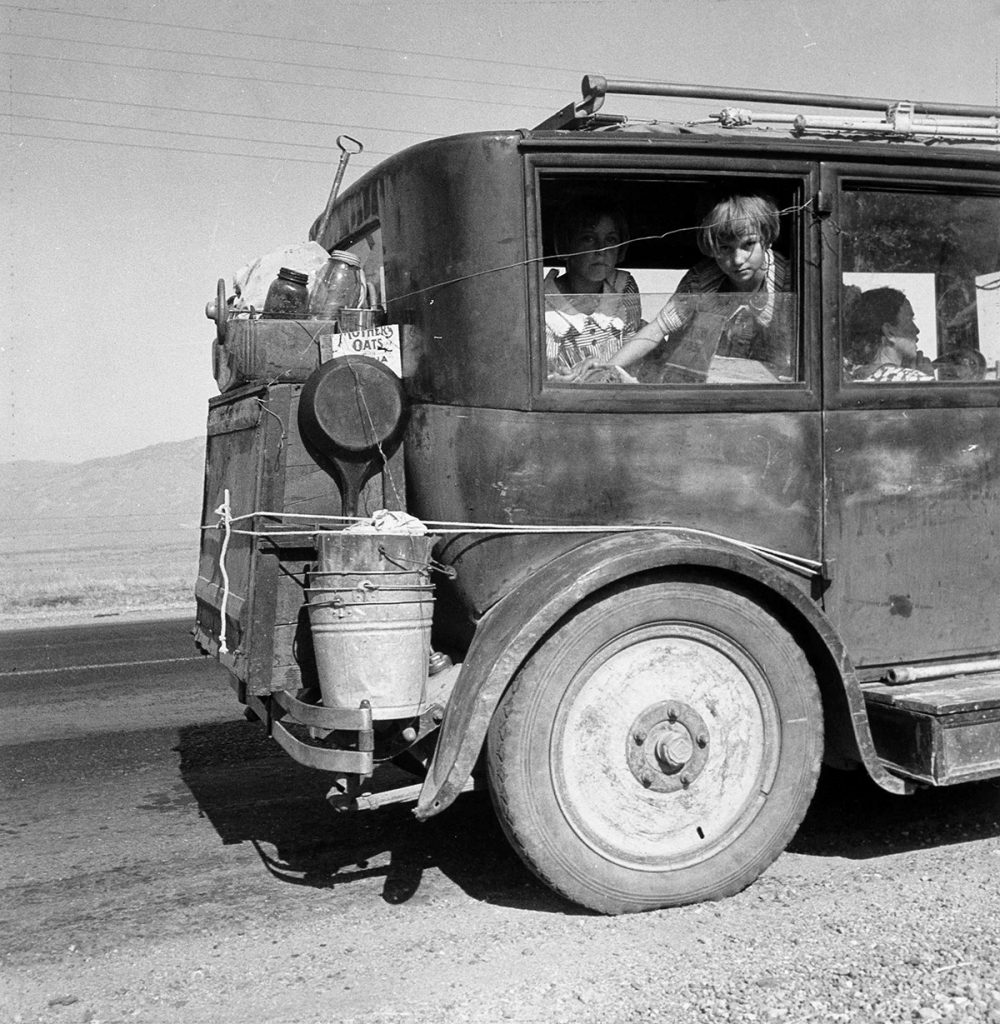
Dorothea Lange | A family of drought refugees from Abilene, Texas, on the road in California | 1936
May 4, 2023Dorothea Lange (1895 – 1965) | A family of drought refugees from Abilene, Texas, on the road in California | 1936
“The depression was making people disappear.
They vanished from factories and warehouses and workshops, the number of toilers halving, then halving again, until finally all were gone, the doors closed and padlocked, the buildings like tombs. They vanished from the lunchtime spots where they used to congregate, the diners and deli counters where they would grab coffee on the way in or a slice of pie on the way out.
They disappeared from the streets.
They were whisked from the apartments whose rents they couldn’t meet and carted out of the homes whose mortgages they couldn’t keep pace with, lending once thriving neighborhoods a desolate air, broken windows on porches and trash strewn across overgrown yards. They disappeared from the buses and streetcars, choosing to wear out their shoe leather rather than drop another dime down the driver’s metal bucket. They disappeared from shops and markets, because if you yourself could spend a few hours to build it, sew it, repair it, reline it, reshod it, reclod it, or reinvent it for some other purpose, you sure as hell weren’t going to buy a new one.
They disappeared from bedrooms, seeking solace where they could: a speakeasy, or, once the mistake of Prohibition had been corrected, a reopened tavern, or another woman’s arms—someone who might not have known their name and certainly didn’t know their faults well enough to judge them, someone who needed a laugh as badly as they did.
They disappeared, but never before your eyes; they never had that magic. It was like a shadow when the sun has set; you don’t notice the shadow’s absence because you expect it. But the next morning the sun rises, and the shadow’s still gone.”
(Thomas Mullen, The Many Deaths of the Firefly Brothers)
I have a tendency in my research to fall down rabbit holes: this is often shaped by history (my interest – which has manifested on this site – in post Soviet artists, for example) and of late The Great Depression has been a point of interest. My enjoyment of horror intersects here, so I will confess that I came to the author that I quote liberally above (whose book follows two brothers whom are bank robbers during the Great Depression, harshly factual and researched, but they find they are resurrected each time they’re killed in one of their robberies) through Daniel Knauf’s Carnivàle series. But, like another writer has pointed out, improbability and violence overflow from ordinary life, and the Great Depression was a time more, perhaps, malleable than most, as many assumptions were fractured irreparably…
And the horrors experienced by many from the Crash of 1929 through the Depression were ‘unimaginable’ to many, until they became commonplace, and now, it seems, have been forgotten. This is similar to how we forget that Lange’s subjects are not just icons but actual people who lived, suffered and died.
To many, Lange’s work requires no introduction. Many of her photographs are so stitched into the fabric of a communal history that they act as signifiers for collective memories. Nonetheless: Dorothea Lange “was an American documentary photographer and photojournalist, best known for her Depression-era work for the Farm Security Administration (FSA). Lange’s photographs influenced the development of documentary photography and humanized the consequences of the Great Depression.” (from here)
I return to Mullen’s book that had flavours of horror, but not in the way I expected, as it was more historical than ‘supernatural’ horror:
“Ten feet behind them, standing at the base of an arc light and looking in the opposite direction, was a young, balding man who Weston supposed was the father. The man looked as if he were trying very hard to become invisible.
When you bump into an old acquaintance on the street, you ask him how he’s doing. He tells you a story and then you tell him your story, and both of you are trying to see where you fit within the other’s. Your story says: This is the way the world is, and I’m the center, over here. But if the other guy tells a different story, with the world like this, where the center’s actually over here, then you realize that you’re way off to the side.
This man did not need to be told he was off to the side. He clearly realized it.”
More of Lange’s work – both her iconic images of The Great Depression and her later work that was more local but considered the same issues of justice and equality – can be seen here.
~ Bart Gazzola
Read More
Mimi Plumb | The Golden City, 1984 – 2020
February 2, 2023Mimi Plumb | The Golden City, 1984 – 2020
So this is where the Renaissance has led to | And we will be the only ones to know
So take a drive and breathe the air of ashes | That is, if you need a place to go
If you have to beg or steal or borrow | Welcome to Los Angeles, City of Tomorrow
(Phil Ochs, The World Began In Eden And Ended In Los Angeles)
When I first encountered Plumb’s images, that song from the late Phil Ochs came to mind: it seems upbeat and pleasant but is, in fact, nuanced with a despair that is subtle but builds (and I will admit my interpretation may be coloured by his suicide. But the rendition of that song I am familiar with is a live version, and Ochs talks at the beginning of his fascination with Los Angeles “which intrigues me like a sensual morgue.” Plumb’s works have a certain sterility, to them, as well, that intersects with this consideration).
As with Plumb’s scenes, there’s more at play than the obvious. Considering that California exists in imaginations just as vividly – if not always accurately – as any seminal ‘place’ like ‘Siberia’, Plumb’s photographs invite us to construct narratives around them, that build, converge or perhaps complete what she intends, with her own personal stories….
I will admit that when looking at Mimi Plumb’s photography, that The Golden City often blended with another body of work of hers, titled The White Sky. I doubt that the artist would be offended by that, as the elements of memory, nostalgia and social realism suffuse her practice, and are themes that are present in her artwork still. Although her narrative is a personal one, it also has elements that are more universal, when considering larger tropes that her work touches upon.
“The Golden City [is] a series of images that frames subjects against the sprawling backdrop of San Francisco. Similar to Plumb’s other bodies of work, The Golden City is an ode to an earlier America—a rich and playful elaboration on the human condition, and its tendencies towards hedonism and spectacle. To say that this work largely references the exploitation of the natural world on account of humans would be reductive. While sculptural detritus and empty construction sites set the groundwork for this series, Plumb flips dramatic irony on its head by capturing subjects enthralled by events transpiring just beyond the frame. We are not in on the comings and goings within this world, but are sucked in nonetheless; left only with a sense of wonder at what could be bringing about such awe.” (from Document, with an engaging conversation with Plumb you can read as well)
Much more of Plumb’s work – from this series and a number of others – can be seen here. If you’d like to listen to her talk about her work, the Museum of Contemporary Photography has a video you can enjoy here.
Plumb published a book of selected images from this body of work with Stanley/Barker books in 2022.
~ Bart Gazzola
Read More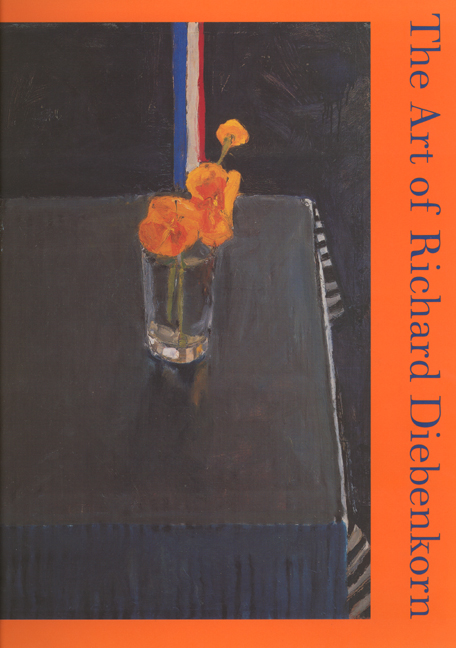
The Art of Richard Diebenkorn
December 18, 2021The Art of Richard Diebenkorn, 1997
Jane Livingston, with essays from John Elderfield and Ruth Fine (The University of California Press)
Forgive me for saying something positive about social media, but it’s allowed for a proliferation of art and images online (which is one of the motivating factors that helped create the Covert Collective); the art historian in me welcomes this, as on Twitter, for example, there’s numerous ‘art bots’ that have filled the sphere with many fine artworks – such as those of Richard Diebenkorn.
“Recognized as a major figure in postwar American painting, Richard Diebenkorn (1922-1993) was an artist strongly identified with California but whose work is beloved throughout the United States and the rest of the world. This catalog is the most comprehensive volume on the artist now available.
Jane Livingston’s extensively researched biographical essay covers Diebenkorn’s entire career and concentrates on the artist’s inner life and purposes as revealed in his paintings. Ruth Fine deals primarily with the figurative aspect of Diebenkorn’s work (1955-67), and John Elderfield concentrates on the Ocean Park period (1967-93). All three authors provide valuable insights based on their personal relationships with the artist and his widow, Phyllis. On both page and canvas, the reader can sense Diebenkorn’s complexity and highly self-conscious working methods, as well as his formidable integrity.
The Art of Richard Diebenkorn will give readers with an interest in all phases of modernism new thoughts about the relationship between abstraction and representation. Stunningly illustrated, with 192 full-color reproductions, this book is an exhilarating testament to a distinctive American artist.” (from the publisher, The University of California Press)
The essays are enjoyable and informative: but the majority of the book is defined by almost 200 full-colour reproductions and that’s why I recommend this book. From Diebenkorn’s still life paintings to his rough portraits to his ephemeral repeated meditations where place and abstraction intersect, this book is rife with beautiful images. “If painting doesn’t offer a way to dream and create emotions, then it’s not worth it”, to quote Pierre Soulages, a contemporary to Diebenkorn, and one can easily get lost among the many images of Diebenkorn’s in this book
This is hopefully to be found at your library (UC Press offers a space to request a copy for the same), or your locally owned bookstore. Since I mentioned social media in this Library suggestion, it would be remiss to not offer links to a Richard Diebenkorn #artbot on Twitter, as a teaser to encourage you to seek out this book.
~ Bart Gazzola
Read More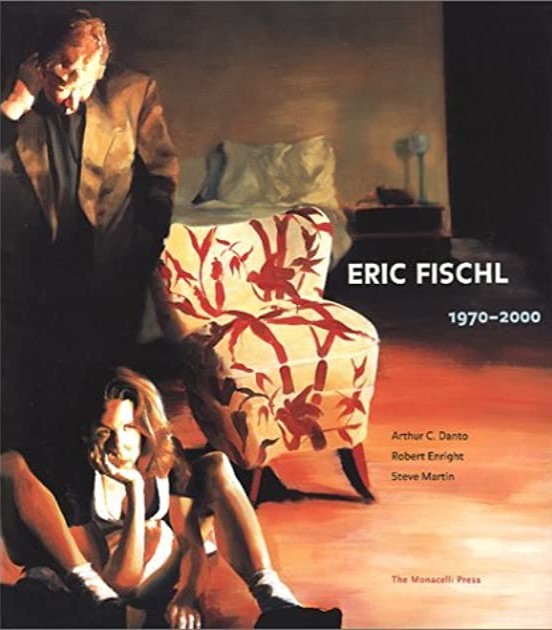
Eric Fischl 1970 – 2000
August 25, 2021Eric Fischl 1970 – 2000 (2008)
Fischl is a complicated, sometimes brilliant, sometimes less so, painter. In offering Eric Fischl 1970 – 2000, I feel that it has to be enjoyed in tandem with his biography Bad Boy : My Life On and Off the Canvas, which is unflinchingly honest about his life and his work. As you peruse the many fine images of his work in this book, I enjoyed the writings of Arthur C. Danto, was less impressed with Robert Enright or Steve Martin, but found myself more so considering Fischl’s own words: “Old-school curators and historians who attempted to predict the zeitgeist failed spectacularly. They underestimated or completely misunderstood our generation’s embrace of irony, nihilism, and the absurd sincerity of the insincere gesture….None of us knew what work would enter the lexicon, what would last. No one really knew if any of it was any good. All we knew was that we were the next generation.”
Fischl, in many ways, is one of the few American painters that were ‘stars’ of the 1980s whose work hasn’t lost some of its appeal over the nearly four decades since that unique and complicated era. From Eric Fischl 1970 – 2000: “Eric Fischl emerged in the 1980s as one of America’s most important figurative painters. His paintings, many of which show a single intense moment, compel the viewer to participate in a world of middle-class suburban ambiguity and drama. In Fischl’s engaging distinctly American canvases, narrative, morality, sexuality, and psychology are preeminent.”
The book can be purchased here, but if you’re like me and lucky enough to have an excellent library nearby – and would prefer to eschew those lumbering e-commerce monstrosities – then that is what I’d suggest (there are also many smaller, independent book stores that would be happy to order it for you, too). Fischl’s images require attention to detail and repeated considerations, and this book offers both that and some interesting, contrasting voices, as well.
Read More
Recent Comments